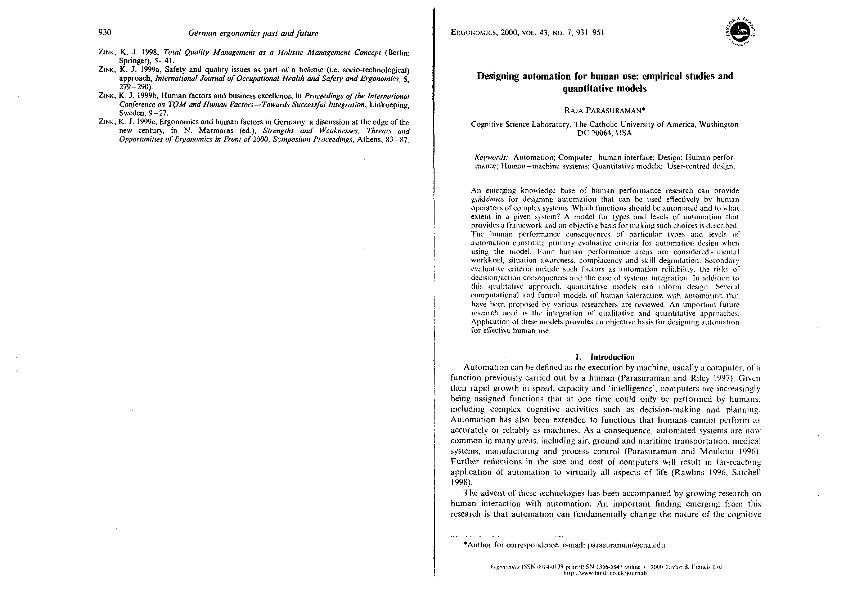Designing automation for human use : empirical studies and quantitative models

Contenido multimedia no disponible por derechos de autor o por acceso restringido. Contacte con la institución para más información.
| Tag | 1 | 2 | Value |
|---|---|---|---|
| LDR | 00000nab a2200000 i 4500 | ||
| 001 | MAP20071501801 | ||
| 003 | MAP | ||
| 005 | 20250605140738.0 | ||
| 008 | 010824e20000701gbr|||| | |00010|eng d | ||
| 040 | $aMAP$bspa | ||
| 084 | $a875 | ||
| 100 | 1 | $0MAPA20080202712$aParasuraman, Raja | |
| 245 | 1 | 0 | $aDesigning automation for human use$b: empirical studies and quantitative models$cRaja Parasuraman |
| 520 | 8 | $aAn emergencing knowledge based of human performance research can provide guidelines for designing automation that can be used effectively by human operators of complex systems. Which functions should be automated and to what extend in a given system? A model for types and levels of automation that provides a framework and an objetive basis for making such choices is described. The human performance consequences of particular types and levels of automation constitute primary evaluative criteria for automation design when workload, situation awareness, complacency and skill degradation. Secondary evaluative criteria include such factors as automation reliability, the risks of decision/action consequences and the ease of systems integration. In addition to this qualitative approach, quantitative models can inform design. Several computational and formal models of human interaction with automation that have been proposed by various researches are reviewed. An important future research need is the integration of qualitative and quantitative approaches. Application of these models provides an objective basis for designing automation for effective human use. | |
| 650 | 1 | 1 | $0MAPA20080550653$aErgonomía |
| 650 | 0 | 1 | $0MAPA20080580100$aDiseño ergonómico |
| 650 | 0 | 1 | $0MAPA20080568009$aAutomatización |
| 650 | 1 | 1 | $0MAPA20080565626$aFactor humano |
| 650 | 1 | 1 | $0MAPA20080608637$aSistema hombre-máquina |
| 773 | 0 | $dLondon [etc.]$gVol. 43 nº 7, July 2000 ; p. 931-951$tErgonomics |

